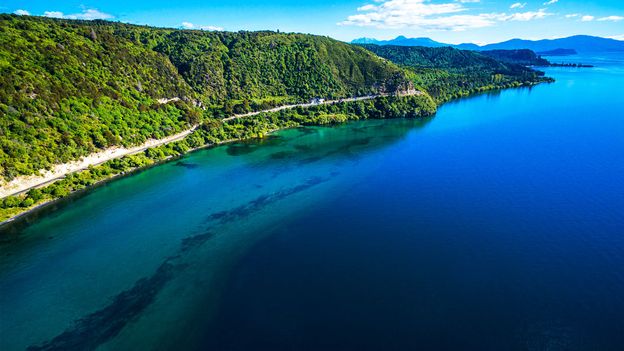Located in the centre of New Zealand’s North Island, the town of Taupo sits sublimely in the shadow of the snow-capped peaks of Tongariro National Park. Fittingly, this 40,000-person lakeside town has recently become one of New Zealand’s most popular tourist destinations, as hikers, trout fishers, water sports enthusiasts and adrenaline junkies have started descending upon it.
The namesake of this tidy town is the Singapore-sized lake that kisses its western border. Stretching 623sq km wide and 160m deep with several magma chambers submerged at its base, Lake Taupo isn’t only Australasia’s largest lake; it’s also an incredibly active geothermal hotspot. Every summer, tourists flock to bathe in its bubbling hot springs and sail through its emerald-green waters. Yet, the lake is the crater of a giant super volcano, and within its depths lies the unsettling history of this picturesque marvel.
The volcano’s last outburst occurred around 250CE and was one of the largest recorded explosions in history, and the largest in the last 5,000 years. According to the New Zealand Crown Research Institutes, it covered areas more than 100km away with of pyroclastic flow. Today, the Taupo super volcano remains active, and is now 800 years overdue for its next eruption.
—
For more on this and other stories, watch BBC’s The Travel Show – every weekend on the BBC News Channel and BBC World News.
If you liked this story, sign up for the weekly bbc.com features newsletter called “The Essential List”. A handpicked selection of stories from BBC Future, Culture, Worklife and Travel, delivered to your inbox every Friday.
